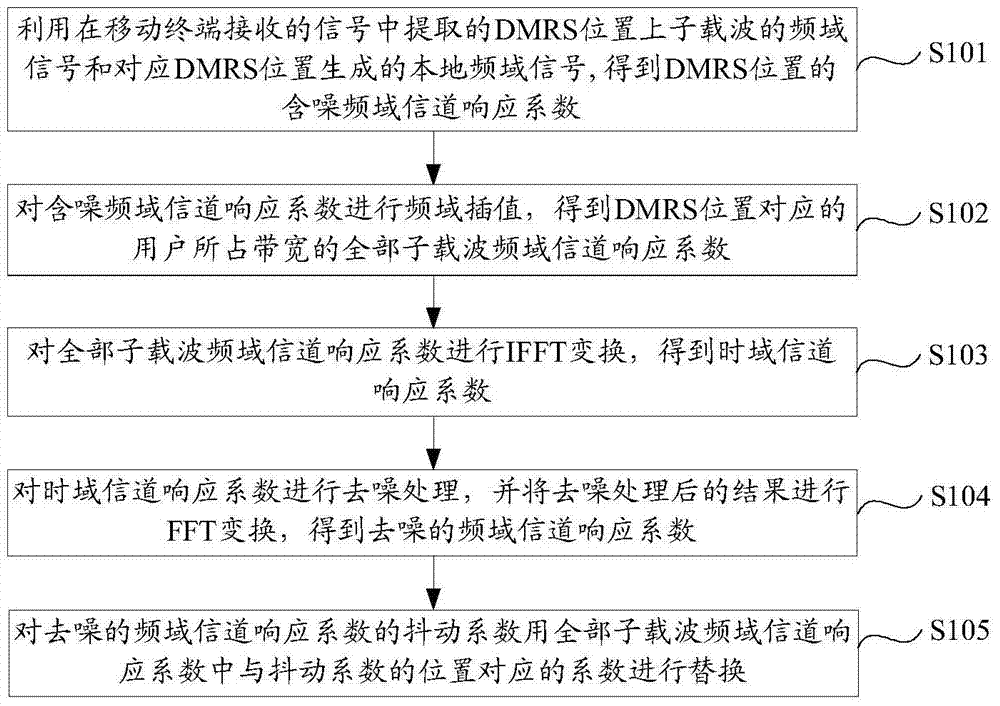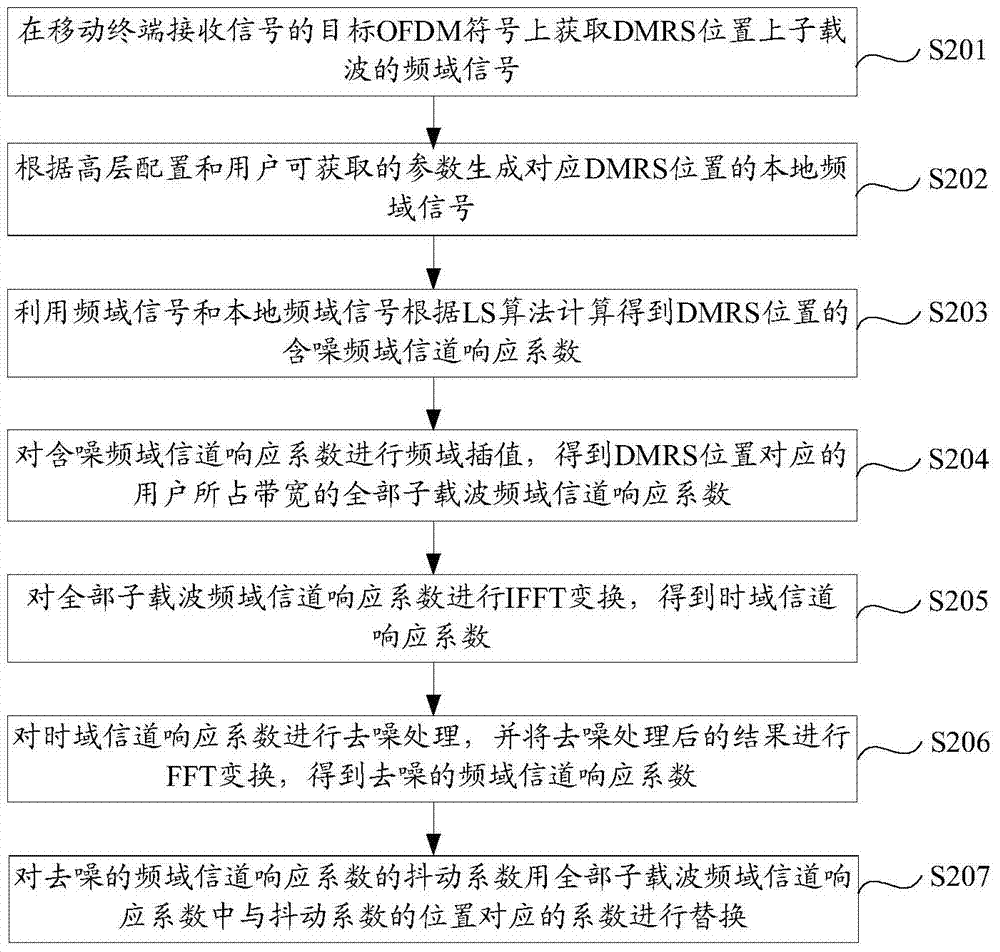A channel estimation method and device based on a demodulation reference signal
A demodulation reference signal and channel estimation technology, which is applied in channel estimation, pilot signal allocation, transmission path sub-channel allocation, etc., can solve problems such as performance inconsistency, floor effect, etc., to avoid floor effect and suppress Gibbs The effect of the jitter phenomenon
- Summary
- Abstract
- Description
- Claims
- Application Information
AI Technical Summary
Problems solved by technology
Method used
Image
Examples
Embodiment 1
[0050]Embodiment 1 of the present application provides a channel estimation method based on a demodulation reference signal, such as figure 1 As shown, the method includes:
[0051] S101: Obtain the noisy frequency domain channel response coefficient of the DMRS position by using the frequency domain signal of the subcarrier at the DMRS position extracted from the signal received by the mobile terminal and the local frequency domain signal generated corresponding to the DMRS position.
[0052] S102: Perform frequency-domain interpolation on the noisy frequency-domain channel response coefficients to obtain frequency-domain channel response coefficients of all subcarriers in the bandwidth occupied by the user corresponding to the DMRS position.
[0053] Specifically, performing frequency-domain interpolation on the noisy frequency-domain channel response coefficients refers to performing frequency-domain interpolation on the bandwidth occupied by the DMRS. In order to facilitat...
Embodiment 2
[0060] On the basis of the first embodiment, the second embodiment of the present application provides another more specific channel estimation method based on a demodulation reference signal.
[0061] Such as figure 2 as shown, figure 2 Indicates a distribution of DMRS in the OFDM resource grid when a user is allocated a PRB bandwidth. R7 represents the RE (Resource Element, resource unit) position occupied by the DMRS, the horizontal direction represents the time axis, and the vertical direction represents the frequency axis. At this time, the user occupies 14 OFDM symbols in the time domain and 12 subcarriers in the frequency domain. Among them, the first column l=0 means OFDM symbol 0, and there are 14 columns in total, that is, 14 OFDM symbols. The 7 consecutive OFDM symbols on the left form a PRB, and the 7 consecutive OFDM symbols on the right are also a PRB. Occupies 12 subcarriers.
[0062] What needs to be clear is that the basic principle of the LS algorithm: ...
Embodiment 3
[0100] On the basis of the first embodiment of the present application, the third embodiment of the present application provides a channel estimation device corresponding to the channel estimation method described in the first embodiment. Such as Figure 4 as shown, Figure 4 It is a schematic structural diagram of an apparatus for channel estimation based on a demodulation reference signal provided in Embodiment 3 of the present application. The device includes: an acquisition unit 301, an interpolation unit 302, a first transformation unit 303, a denoising unit 304, a second transformation unit 305, and a replacement unit 306, wherein,
[0101] The acquisition unit 301 is configured to obtain the noisy frequency domain channel response coefficient of the DMRS position by using the frequency domain signal of the subcarrier at the DMRS position extracted from the signal received by the mobile terminal and the local frequency domain signal generated corresponding to the DMRS p...
PUM
 Login to View More
Login to View More Abstract
Description
Claims
Application Information
 Login to View More
Login to View More - R&D
- Intellectual Property
- Life Sciences
- Materials
- Tech Scout
- Unparalleled Data Quality
- Higher Quality Content
- 60% Fewer Hallucinations
Browse by: Latest US Patents, China's latest patents, Technical Efficacy Thesaurus, Application Domain, Technology Topic, Popular Technical Reports.
© 2025 PatSnap. All rights reserved.Legal|Privacy policy|Modern Slavery Act Transparency Statement|Sitemap|About US| Contact US: help@patsnap.com



